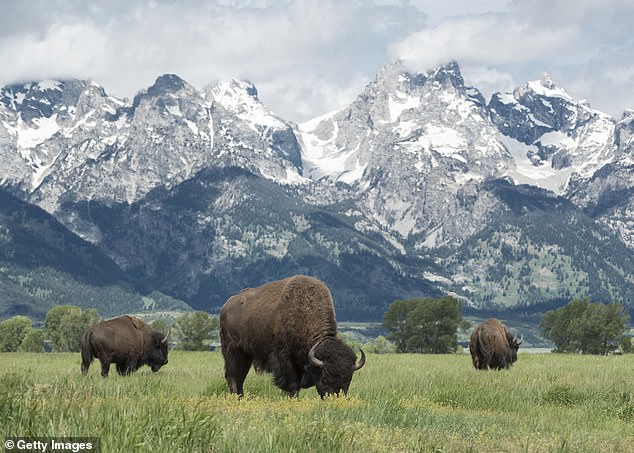For anyone who’s wandered through Yellowstone or the Great Plains, the sight of bison moving across the land is breathtaking—but new research suggests it’s more than just a scenic spectacle.
Scientists have found that America’s bison are retracing migration routes that predate European settlement, hinting at a remarkable recovery of the continent’s ecological balance.
A six-year study, combining GPS collars, satellite imagery, and on-the-ground experiments, revealed that these giant mammals are instinctively returning to the same seasonal corridors their ancestors used thousands of years ago.
This revival has been made possible by decades of conservation work, which removed barriers and restored landscapes that allow bison to follow environmental cues like snow patterns, vegetation growth, and access to water.
Old Leaders Guide New Generations
One fascinating discovery is the way older bison lead younger herd members along these ancestral routes, passing down knowledge that spans generations.
By reclaiming these ancient pathways, bison are not only preserving their natural behaviors but also contributing to the restoration of ecosystems across the continent.
With a current population of roughly 5,000 animals—stabilized since the mid-2010s after rebounding from just 23 individuals in 1902—bison now cover about 1,000 miles a year on migration routes stretching 50 miles.
Researchers found that their exceptional spatial memory allows them to revisit high-quality grazing areas once obstructions are removed, maximizing the nutritional impact of their movements.
Grazing That Boosts the Entire Ecosystem
Bill Hamilton, John T. Perry Jr. Professor of Research Science at Washington and Lee University, explained, “As bison move across the landscape, they amplify the nutritional quality and capacity of Yellowstone.”
Far from simply eating plants, their grazing enhances the nitrogen cycle, enriching the soil and increasing microbial activity.
This results in vegetation that can be up to 150 percent more nutritious than ungrazed areas, benefiting not just bison but other herbivores across the park.
By studying bison from 2015 to 2021, researchers compared grazed and ungrazed areas using movable enclosures, satellite imagery, and GPS tracking.
They monitored plant growth, nutrient cycling, soil chemistry, and microbial populations, showing that free-ranging herds have a transformative effect on entire ecosystems.
The Legacy of Bison Across North America
Bison have roamed the continent for over 10,000 years, shaping grasslands and supporting countless other species.
Before European colonization, tens of millions ranged freely from Alaska to Mexico, maintaining open landscapes, enriching soil, and sustaining biodiversity.
Native American tribes relied on them for food, clothing, shelter, tools, and spiritual practices, making bison central to cultural and ecological life.
The 19th century brought near-extinction, with overhunting and government campaigns reducing the population to fewer than 1,000 animals by the 1880s.
This collapse disrupted ecosystems and devastated Native communities.
Early conservation efforts in national parks and private ranches prevented total extinction, but bison were often kept fenced and isolated, unable to roam freely along their ancestral routes.
Conservation Success and the Path Forward
By the mid-20th century, populations began to grow slowly, but most bison were managed for livestock or small-scale ecological purposes.
Today, these majestic animals are once again reclaiming their migratory behaviors, demonstrating the importance of large, free-ranging herds for ecological health.
As they traverse ancient pathways, bison not only reconnect wildlife with the natural rhythms of the land but also provide hope for revitalizing landscapes across North America.
Share on Facebook «||» Share on Twitter «||» Share on Reddit «||» Share on LinkedIn
